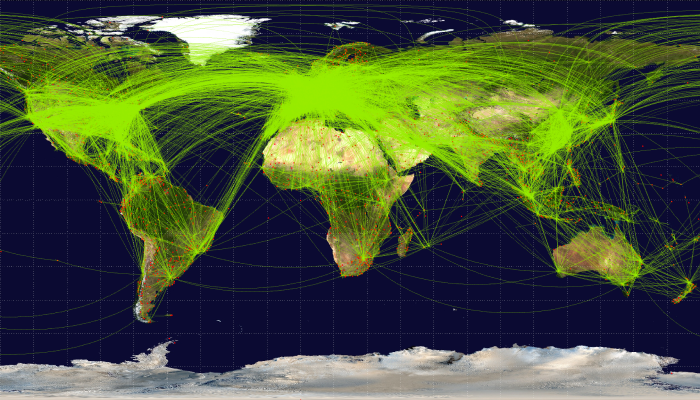Communication
Where can I find information about communication?
(Years 5-8)

Image: 2 Boy Sitting on Brown Floor While Using Their Smartphone by Pixabay on Pexels.
Entry last updated: 10/07/25
Introduction
Historically people have been communicating with each other in many different ways. There is verbal communication, which uses sounds and spoken language, non-verbal communication such as sign language and body language, written communication in the form of signs, written text, signals, and visual communication like art, photography and painting.
Today telecommunications is an essential part of daily life. It includes, television, telephones and the internet.
Types of communication
Here is a list to get you familiar with some examples of communication.
Body language: a form of nonverbal communication that uses hand gestures, facial expression, and posture to show a message.
Braille: is a writing system used by people who are blind or visually impaired. It uses raised dots that people can read by running their fingers over the patterns.
Hieroglyphics: was the formal writing system used in Ancient Egypt that used pictures instead of words.
Morse code: uses codes of dots and dashes to make up letters, numbers and punctuation. The codes are transmitted by telegraph, radio communication or even by flickering lights.
Sign language: is one of the non-verbal ways that deaf or hard of hearing people use to communicate. Different countries have their own versions of sign language. New Zealand Sign Language is one of the official languages in New Zealand.
Smoke signals: are one of the oldest forms of non-verbal, long distance communication. It was used in Ancient China, Greece and among indigenous peoples in North America. It is still useful in some situations today.
Spoken language: verbal communication, could be through talking, telling stories, songs, oral histories, and more.
Telecommunication: where people communicate over long distances using different types of technology like radio, telephone, television, and telegraph.
Written language: words or ideas that are written down. Could be stories, poems, letters, newspapers, and more.
General websites
The websites below will help you find information about types of communication, examples of communication and how it is useful.
Britannica School is part of EPIC , a collection of reliable databases covering lots of different topics. It is put together especially for New Zealand school students and helps to answer questions like this.
Choose Middle to start your search.
Enter the word 'communication' into the search box at the top of the page.
Select the article communication (social behavior) to read about why people communicate, and forms and types of communication like the use of symbols, verbal, non-verbal and digital communication.
You can select to read an easier level from Article Reading Level found at the top of the page.
Try using keywords from the list like 'Braille' or 'Morse code' to learn more about this topic.
Tips: To get to the EPIC resources you will need a password from your school librarian first. Or you can chat with one of our AnyQuestions librarians and they will help you online. Some EPIC databases may also be available through your public library.
Tips: Search words, or keywords, are the most important words in our question. Usually it’s better to leave out small words like ‘the’, ‘a’ and ‘of’ and just choose the main ones, eg communication. We can always change our keywords or add more if we need to.
HowStuffWorks is a good website for finding out how all sorts of things work.
Type in words like 'telephones' or 'internet' or any other form of communication.
You will find articles like How Telephones work and How does the internet work.
At the top of the page you will find the words Next page — this means there are more pages to read on this topic.
Each article has the name of the writer below the title. Select the name of the writer to read about their education and qualifications.
Tips: Some websites have advertisements (or ads) which ask us to buy something or tell us to ‘click here’. It’s best to ignore these ads and focus on the information we’re looking for.
New Zealand sites
Have a look at these sites to find out about the history of communication in New Zealand, and te reo Māori and New Zealand Sign Language as official languages of New Zealand.
Te Ara: Encyclopedia of New Zealand
Te Ara is an excellent starting point for all questions about Aotearoa New Zealand. If we look down to the bottom of the page, we can see that the website belongs to the Ministry for Culture & Heritage, so the information is well-researched and reliable.
Go to Topics and choose Language.
There are several stories here that could be useful, for example Te reo Māori - the Māori language and English language in New Zealand.
Or you could use the search word 'communication' to read an article on the history of communications in New Zealand.
NZ History is a great website for information about Aotearoa New Zealand. This website also belongs to the Ministry for Culture & Heritage.
The keyword 'communication' will bring up history of the First trans-global radio transmission to London.
Under Images and media on the results page, you will find historical images and information on the Post and Telegraph guards at Cable Bay and Long-distance wireless stations.
This site has resources for learning Māori put together by Te Taura Whiri i te Reo Māori | The Māori Language Commission.
Go to the tab Ngā Karere me Ngā Rauemi | News and Resources.
Choose Rauemi reo | Reo resources.
Use the filters to find resources eg Pronunciation, Everyday, Phrases and more.
Tips: We like sites like Te Ara, NZ History and the Māori Language Commission because they’re reliable. You can tell because of their web address – they have either .govt or .ac, meaning they are from government or educational organisations. They’re also New Zealand sites, so relevant for us.
Learn NZSL (New Zealand Sign Language)
This website has videos, resources and exercises to help you learn New Zealand Sign Language. The websites is supported by Victoria University of Wellington and the New Zealand Sign Language Association.
If you scroll down the page, you will be able to watch, learn and practise how to use sign language in day to day situations like Meet and greet or Needs and wants.
Using these pages will also help you learn how to use sign language for words, phrases and conversation around each topic.
Tips: Some websites have .au, .nz, .uk or other codes in their url. This can tell you which country this website comes from eg .au is from Australia or .nz is from New Zealand. You can check the About link on the website for more information.
Books
Here are a few suggestions of books to get you started. Check with your local librarian for more!
You talking to me? : discover the world of words, codes, emojis, signs, slang, smoke signals, barks, babbles, growls, gestures, hieroglyphics & more by Catherine Ham
Children's visual communication dictionary : New Zealand Sign Language - Māori - English = Te reo Rotarota, he papakupu mā te hunga tamariki by Lee Bilby, Voice Thru Your Hands, and He Kupenga Hao i te Reo
Alpha, Bravo, Charlie : the complete book of nautical codes by Sara Gillingham
Incredible inventions. Let's communicate : from the first written word to the internet by Matt Turner
Smoke signals to smartphones : a timeline of long-distance communication by World Book Inc.
SCIS no: 1971778
Topics covered
Related content

Inventors and inventions
Where can I find information about different inventors and what they invented?

Globalisation
Where can I find information about Globalisation?

Te reo Māori (Māori language)
Where can I find information about te reo Māori (the Māori language)?

Digital citizenship
Where can I find information about digital citizenship?

Sign Language (New Zealand)
Where can I find information about sign language?

Writing
Where can I find information about how to write?

Leadership
Where can I find information about leaders and leadership?
